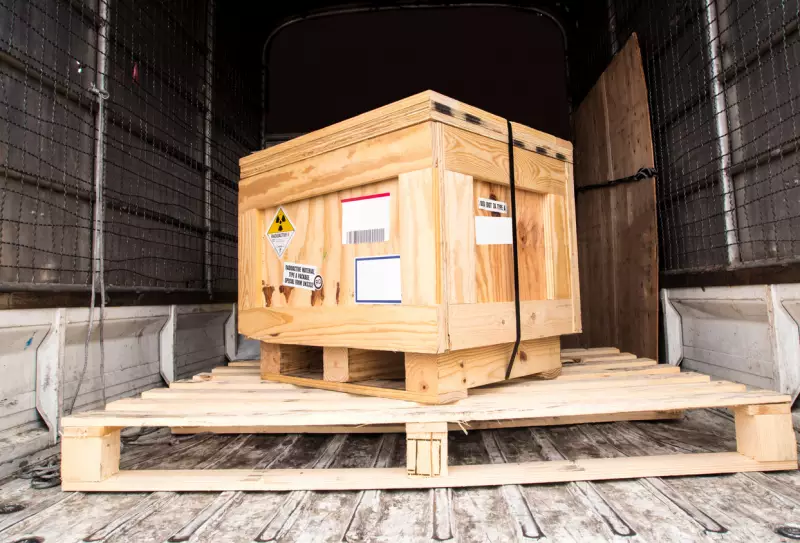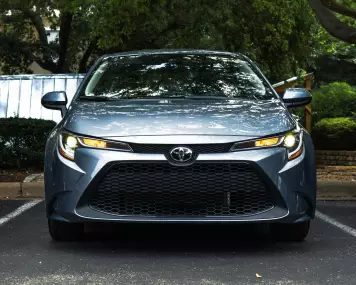Department of Transportation inspections refer to a series of assessments the authorities require to ensure commercial motor vehicles are in good working conditions. They are often impromptu roadside inspections by law enforcement officers acting under the Federal Motor Carrier Safety Administration. Pre-trip inspections for commercial vehicles are critical to ensuring vehicle safety. These DOT inspections are there to make sure they can be operated safely on the road. If a truck is not properly inspected, the driver and other road users can be at risk. For example, if the brakes fail on a 36-wheeler, it can cause a multi-vehicle pileup, leading to several fatalities. An inspection of operable components would have prevented its use and ensured the safety of those who would be victims.
What Is a DOT Inspection?
DOT inspections refer to tests assessing if commercial motor vehicles are in proper working order. These inspections are done on commercial vehicles that weigh over 10,000 pounds. Fleet inspections may not only determine the vehicle's condition but also help keep other road users safe by ensuring they are at the minimum safety level. Keeping vehicles up to date creates a significant advantage from an economic standpoint. Businesses are able to save on costly on-the-spot repairs if they utilize a proactive approach, and fleet vehicles last much longer as a result.
While the Department of Transportation oversees the inspections, other groups help enforce the laws. These include Federal Motor Carrier Safety Administration personnel, Commercial Vehicle Safety Alliance, and state trooper personnel. Though inspections are supposed to be random roadside events, they can happen at weigh stations, truck stops, and the carrier’s location. Drivers are required to act in a professional manner and comply with on-the-spot assessments.
How Many Levels of DOT Inspections Are There?
In North America, six inspection levels are mandated for commercial vehicles in accordance with federal regulations. The most common are levels I, II, III, and V, though I is the most frequently done. Drivers may not know which one is being performed as it depends on what the DOT officer looks for in each case. Usually, the inspections can last from 15 to 60 minutes, and drivers must provide for each requirement.
Level I: North American Standard Inspection
The North American Inspection is the most thorough as the officer considers the entire vehicle for damaged parts or the presence of illegal cargo. Drivers must show all required documents to the officer, including driver’s logs, commercial driving license, and medical or performance evaluation certificates. The drivers will also be assessed for alcohol or drug use. DOT officers will examine certain parts according to their form. These are
- Braking system
- Seatbelts
- Headlights and brake-lights
- Coupling devices
- Cargo securing
- fuel system
- Steering mechanism
- Windshield wipers
- Suspension
Though it is usually referred to as a manual assessment form, the Level I Inspection is also offered wirelessly. North America’s Standard Electronic Inspection mandates that one collects specific data digitally along with Hours of Service, GPS Coordinates, and proof of inspection. It entails a digital inspection while the vehicle is in motion without interacting with a DOT officer. A typical Level I inspection takes 45 to 60 minutes for the inspector to review all the paperwork. Inspectors may also check the driver’s blood alcohol concentration level.
Level II Walk-Around Vehicle Inspection
The second level is quite similar to the first, with the inspector checking everything on the list without going underneath the commercial vehicle. Though it is less exhaustive compared to level I, commercial vehicle drivers are encouraged to prepare for it like they would for the former. Inspectors would still require much of the standard documentation and check if the driver is under the influence of drugs or alcohol.
Level III- Driver Only Inspection
The third level assesses only the driver and their credentials or paperwork. The reason for this is to keep the records as current as possible.
- Electronic logging device
- License
- Record of Duty Status
- Hours of Service
- Driver Vehicle Inspection Report
- Medical examiner’s and performance evaluation certificates
If applicable, traffic infractions may also be evaluated at this level to determine if the driver has tickets or warrants or if they ought to be on the road. However, mechanical equipment, assessed in level I inspection, is not included.
Level IV: Special Inspection
Level four inspections are rare and typically occur once to check on documentation or engine capability. The American Truck Business Services indicated that Special Inspections are there to confirm or deny a potential trend in DOT evaluations. Level IV inspection may be done for research objectives to refute or verify a suspected trend. It may entail an examination of vehicle parts or paperwork. That is whatever applies to the data required.
Level V- Vehicle Only Inspection
Unlike driver-only inspection, the level five evaluation is straightforward in meaning. It considers vehicle components as outlined in level I, but excludes driver records like licenses, records of duty status, and hours of service. During the inspection, the inspector will also evaluate these parts without the driver being present. It usually happens at the carrier’s location during compliance reviews. The standard duration for a vehicle-only type inspection is 30 minutes.
Level VI- Enhanced NAS Inspection For Radioactive Shipments

This is a particular inspection type for commercial vehicles that carry sensitive material. These shipments may include medical waste, nuclear material, or other hazardous freight. It is one of the North American Level I Inspections but with an added emphasis on radioactive material checking. Inspections at this level are harder considering the specialized criteria for inspection, regular inspection procedures with additions, and radiological requirements. So, the vehicle, driver, and cargo must be defect-free before being cleared for road use. In some cases, a nuclear decal would be placed on the commercial vehicle to show the passing of this level VI inspection.
How Often Are DOT Inspections Required
All commercial vehicles must be inspected once a year to comply with state and federal regulations. This is in accordance with the Federal Motor Carrier Safety Administration section 396.17. If a vehicle does not pass the inspections regardless of the levels tested, it will not be allowed to operate until the cause of the failure is corrected and it is re-inspected. Typically, DOT inspection durations depend on the level, but they range from 15 minutes up to an hour.
Do You Have to Be Certified to Do Annual DOT Inspections?

There is no licensing requirement to conduct commercial vehicle inspections, but the inspector must be certified. These requirements for basic certification apply to those newly appointed or assigned from other agencies to Federal Motor Carrier Safety Administration positions with level I and V inspection responsibilities. To do level I and V inspections, one has to complete the FMCSA Inspector academy, FMCSA North American Standard Level I Course, and participate in 30 Level I or V inspections per the direction of an individual certified to do these inspections.
They should also have a combination of training or experience totaling a year at least. It may entail participation in a motor vehicle manufacturer-sponsored training program or similar commercial training initiatives. They should have experience as a mechanic or inspector in commercial motor vehicle maintenance at a commercial garage.
DOT Vehicle Inspection Requirements
To pass the inspection, all commercial vehicles must comply with all stated and inspected levels.
- For Level I, the driver has to provide their driver’s license, logs of service hours, and vehicle inspection reports. Specific vehicle components must be in working order as well. These include braking systems, headlights, batteries, cargo securement, fuel systems, windshield wipers, suspension, steering systems, coupling devices, tires & rims, and seatbelts.
- For level II, the same components should be in working order, along with the driver’s history of duty status and soberness at the time.
- To pass a Level III inspection, which is driver-oriented, their CMV license, a record of duty status, hours of service, driver vehicle inspection report, logging devices, and medical examination performance certificate should be in order.
- Level V inspections require that important vehicle components are working without the driver present. The enhanced NAS Inspection for radiological material mandates that the vehicle, driver, and cargo are defect-free.
Conclusion
DOT Vehicle inspections are annual mandatory checks done to ensure they are road-worthy. Commercial vehicles must undergo these checks because of the load they carry, the frequency of transportation, and the general high safety requirements for transit at their level. The six levels of inspection are meant to test every facet of commercial transport, including driver’s certifications, vehicle components, and the cargo being ferried. For this reason, some levels are conducted solely on the driver, while others are done on the vehicle or cargo alone. DOT inspectors do not have to be certified, but there are specific programs they have to go through to be qualified. They should also have trained under an inspector for at least a year. DOT Inspections may seem tedious for commercial vehicle operators, but the officers do not want them to fail. Hence, they summarize the typical requirements and what it takes to prepare for an inspection.








![Best Sites to Check a Car’s History [2025 Review]](https://media.infopay.net/thumbnails/K8lMeG2QLjE46LPqZlmoi6SunKKdT5qvlaRZk6e1.webp)










![Best Sites to Check a Car’s History [2025 Review]](https://media.infopay.net/thumbnails/K8lMeG2QLjE46LPqZlmoi6SunKKdT5qvlaRZk6e1-w356.webp)
